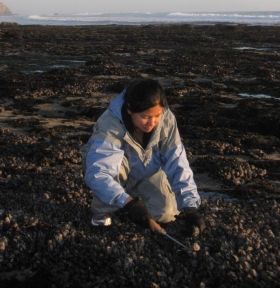Researchers monitoring San Francisco Bay for algal toxins have found a surprising array of different toxins in the water and in mussels collected from the bay. Four different classes of toxins, including one produced in freshwater environments, occur regularly throughout the bay, according to a study led by UC Santa Cruz researchers and published March 10 in Harmful Algae.
"The bay is acting as a big mixing bowl where toxins from both fresh and marine water are found together," said senior author Raphael Kudela, the Lynn Professor of Ocean Health at UC Santa Cruz. "A big concern is that we don't know what happens if someone is exposed to multiple toxins at the same time."
Although shellfish on the open coast are routinely monitored for some of these toxins, the toxins and contamination levels in shellfish from San Francisco Bay may be very different from what's found on the open coast, he said. The researchers found that 99 percent of mussels collected from the bay were contaminated with at least one algal toxin, and 37 percent contained four distinct kinds of toxins. The contamination greatly exceeded regulatory guidelines for multiple toxins in 2012, 2014, and 2015.
Eating contaminated mussels can have serious health effects for humans and wildlife. Although there are no commercial shellfish operations in San Francisco Bay, some people do harvest mussels from the bay for their own consumption.
Read more at University of California - Santa Cruz
Image: UCSC researcher Kendra Negrey collects mussels for research on the accumulation of algal toxins in shellfish. (Credit: John Negrey)


